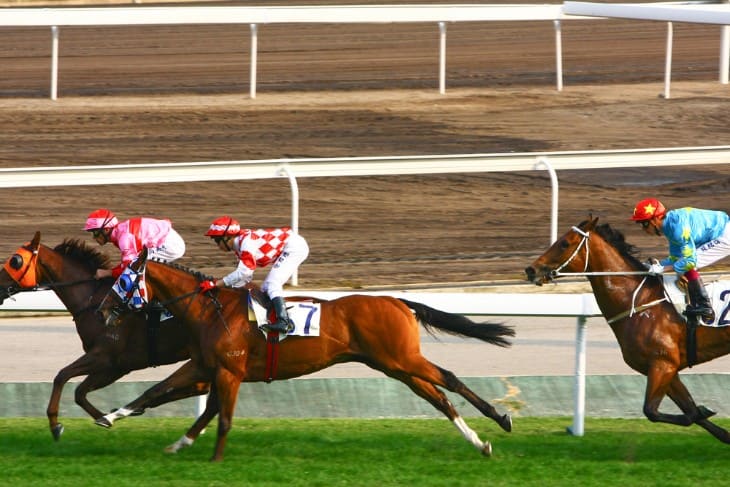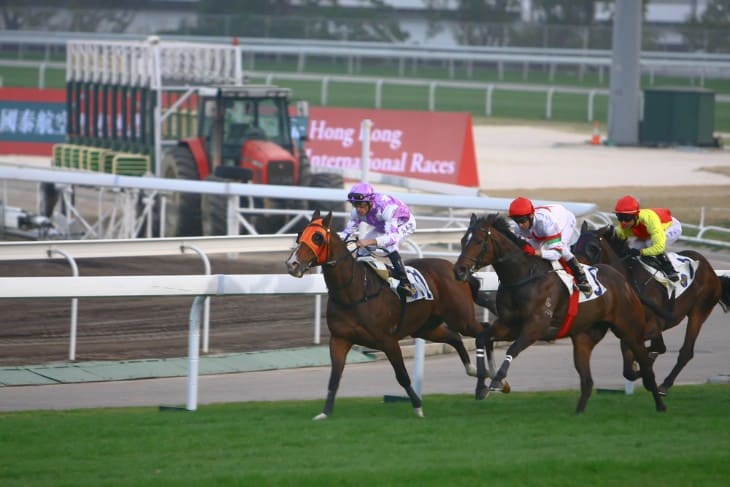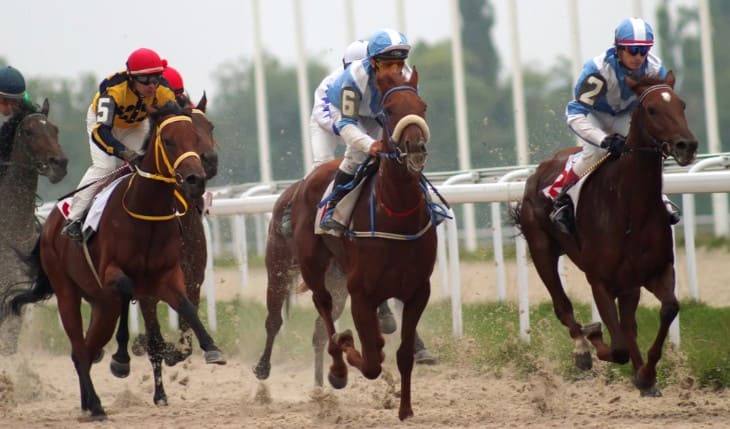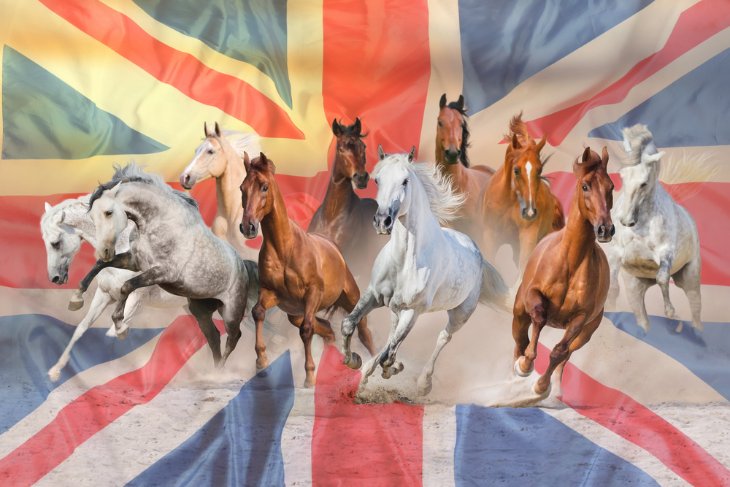Horse racing has been an integral part of British culture for centuries, enthralling spectators and punters alike with its display of equine excellence and raw athleticism. Throughout the annals of racing history, there have been remarkable steeds that have left an indelible mark on the sport. These horses have transcended their time, becoming icons and legends, their names etched in the hearts of racing enthusiasts. In this article, we take a journey through the ages to share stories of the most celebrated horses that have graced the UK tracks, their notable victories, and their enduring legacy.
Eclipse - The Unbeatable Icon of the 18th Century
The 18th century marked a pivotal period in the evolution of British horse racing, and one name that stood above all others was Eclipse. Foaled in 1764, Eclipse was a breathtakingly handsome chestnut thoroughbred with a star on his forehead, and he had the pedigree to match. His sire, Marske, was a descendant of the illustrious Godolphin Arabian, while his dam, Spilletta, traced her lineage back to the equally renowned Darley Arabian.
Eclipse's name was derived from the solar eclipse that occurred on the day of his birth, hinting at the extraordinary destiny that awaited him. Trained by Dennis O'Kelly and ridden by the esteemed jockey, William Wheatley, Eclipse displayed an unrivaled talent on the racetrack, sweeping his rivals aside with effortless ease.
What set Eclipse apart from his contemporaries was his unmatched dominance - he remained undefeated in all 18 of his races. This phenomenal streak of victories was a testament to his sheer brilliance and athleticism. Yet, it was not just his wins that made him legendary; it was the manner in which he achieved them. In many races, Eclipse trailed his opponents, seemingly uninterested, before launching a breathtaking sprint in the closing stages to claim victory. This flair for dramatic finishes only added to his allure.
Eclipse's impact on the breeding lines of future racehorses cannot be overstated. His genes were passed down through generations, shaping the course of thoroughbred racing in the UK and beyond. Approximately 80% of modern thoroughbreds can trace their lineage back to Eclipse, cementing his legacy as one of the most influential sires in history.
Although Eclipse's racing career ended in 1770, his name and legacy have lived on for centuries. His statue stands proudly at the National Horseracing Museum in Newmarket, a testament to his enduring impact on the sport. Eclipse remains a symbol of greatness, an inspiration for all aspiring racehorses to reach for the stars.

Beeswing - Queen of the Turf in the 19th Century
The 19th century brought forth another equine phenomenon that captivated the racing world - Beeswing, a chestnut mare of extraordinary talent and determination. Foaled in 1833, Beeswing was a product of pedigree and tenacity, combining the bloodlines of some of the finest racehorses of her time.
Owned by Ralph Riddell and later by Thomas Parr, Beeswing achieved fame and admiration for her exceptional ability to withstand grueling races and emerge victorious. She was renowned for her consistent performances and a remarkable winning streak that spanned several seasons. Beeswing's agility, combined with her endurance, allowed her to conquer both short sprints and long-distance races, making her a formidable competitor on any track.
What endeared Beeswing to the public was her charismatic personality. Often playful and spirited, she exuded an aura of majesty that drew spectators to her. Her jockeys, notably the renowned Sam Chifney Jr., spoke fondly of her intelligence and willingness to cooperate, attributing much of her success to their strong rapport.
Throughout her illustrious career, Beeswing competed against some of the finest horses of her time, consistently proving her mettle and defying the odds. Her epic duels with the likes of Lanercost and Faugh-a-Ballagh drew large crowds and ignited the passions of racing enthusiasts across the country.
As Beeswing's fame spread far and wide, she became a beloved icon of the 19th-century racing world. Admirers and fans followed her every move, and newspapers of the time celebrated her triumphs with fervor. To this day, her name remains synonymous with the golden age of British horse racing.

Glorious Galop: The Triumphs of Gladiateur in the Victorian Era
As the Victorian era dawned, a new equine superstar emerged to captivate the hearts of racing enthusiasts - Gladiateur. Foaled in 1862, this magnificent bay stallion was sired by the French champion, Monarque, and his dam, Miss Gladiator, hailed from an impressive line of winners. Owned by Count Frederic de Lagrange, Gladiateur's regal bearing and powerful strides quickly earned him the moniker "The Emperor of Longchamp."
Gladiateur's most defining moment came in 1865 when he contested the Epsom Derby. Under the guidance of jockey Tom French, the stallion showcased his immense talent, leaving his rivals in the dust as he galloped to victory. This triumph marked the first time a French horse had won the prestigious English classic, solidifying Gladiateur's reputation as an international sensation.
But it was not just the Epsom Derby that Gladiateur conquered. The stallion's unparalleled prowess saw him claim victory in the Ascot Gold Cup, the Doncaster Cup, and the Emperor's Plate in France, showcasing his versatility across different distances. With each triumph, his fanbase grew, and he became the toast of racing enthusiasts on both sides of the English Channel.
As Gladiateur's career flourished, so did his stud career. Many of his progeny went on to achieve success on the racetrack, ensuring that his legacy endured long after his retirement. His influence was particularly felt in France, where he sired a line of winners that dominated the racing scene for years.

Flying Fox - The Unstoppable Force of the Early 20th Century
The early 20th century bore witness to the meteoric rise of one of the most exceptional thoroughbreds in racing history - Flying Fox. Bred by Sir James Miller and trained by John Porter, Flying Fox was born in 1896 and hailed from a lineage of illustrious champions, including Orme and Galopin.
Flying Fox's career took flight under the skilled guidance of jockey Morny Cannon. His exceptional speed and stamina were evident from the outset, and he quickly gained a reputation as an unstoppable force on the racetrack. His most remarkable feat came in 1899 when he secured victory in the English Triple Crown, triumphing in the 2000 Guineas, the Epsom Derby, and the St. Leger Stakes.
What set Flying Fox apart from other champions was his consistency. Throughout his racing career, he was defeated just once, displaying an unwavering determination and tenacity that left spectators in awe. His versatility was equally impressive - excelling over various distances and different types of racecourses.
Beyond his accolades, Flying Fox was a horse of tremendous character, capturing the hearts of fans and earning the adoration of his stable staff. He became known for his playful demeanor and affectionate nature, endearing him to all who had the privilege of working with him.
After his retirement from racing, Flying Fox continued his success as a sire, producing a string of talented offspring. His bloodline was particularly influential in France, where his descendants continued to shine, ensuring his legacy remained intact for generations to come.

Red Rum - Triumph Over Adversity in the Grand National
No exploration of legendary horses in UK racing history would be complete without paying homage to the remarkable Red Rum. Born in 1965, this chestnut gelding emerged from humble beginnings to etch his name indelibly into the folklore of the Grand National.
Owned by Noel Le Mare and trained by the astute Ginger McCain, Red Rum had a rather unremarkable start to his racing career. However, his fortitude and determination soon became evident when he tackled the grueling Aintree course for the first time in 1973. Under the guidance of jockey Brian Fletcher, Red Rum stormed to victory in the world's most iconic steeplechase, capturing the hearts of the nation.
But it was not just one victory that defined Red Rum's legacy; it was his sheer tenacity and will to win, even amidst adversity. In the subsequent years, Red Rum made history by winning the Grand National not once, but thrice. His back-to-back victories in 1974 and 1977, and a close second-place finish in 1975, showcased his extraordinary talent and resilience.
Red Rum's affinity with the Aintree fences was nothing short of miraculous. He had an uncanny ability to navigate the treacherous obstacles, earning him the endearing nickname "The People's Horse." His triumphs in the Grand National transcended the sport, uniting the nation in a shared celebration of his remarkable achievements.
The legacy of Red Rum continued long after his racing days ended. He remained an iconic figure, appearing at various public events and even leading the parade of runners at subsequent Grand Nationals. After his passing in 1995, he was buried at the Aintree winning post, a testament to the profound impact he had on the race and its history.

Arkle - The Invincible Steeplechaser of the 1960s
In the 1960s, a horse emerged who redefined the limits of steeplechase greatness - Arkle. Foaled in 1957, this magnificent bay gelding was owned by Anne Grosvenor, the Duchess of Westminster. Under the guidance of trainer Tom Dreaper, Arkle's remarkable abilities propelled him to become the greatest steeplechaser of all time.
Standing at over 17 hands tall, Arkle was a formidable presence on the track. His immense size and power were complemented by an uncanny agility, allowing him to soar over fences effortlessly. His illustrious career was marked by an astonishing run of victories, amassing a stunning 27 wins out of 35 races.
Arkle's most iconic moment came in the 1964 Cheltenham Gold Cup, where he secured the first of his three consecutive victories in the prestigious race. His dominance was so overwhelming that, in subsequent years, he was often pitted against the best horses in training in "walkover" races to ensure fair competition.
Yet, Arkle's greatness extended beyond his victories. His rivalry with fellow champion Mill House is still talked about in hushed tones. The two horses clashed in a series of epic duels, each pushing the other to new heights of performance. Their enthralling contests captivated racing enthusiasts and elevated both horses to legendary status.
Tragically, Arkle's career was cut short by injury, and he was retired from racing in 1966. Despite this premature end, his legacy was firmly established. He was honored with the highest Timeform rating ever given to a steeplechaser, a testament to his extraordinary talent and achievements.

Nijinsky - A Triple Crown Champion Like No Other
In the realm of racing legends, one name stands tall as a testament to unparalleled greatness - Nijinsky. Foaled in 1967, this majestic bay colt was bred by Charles Engelhard and trained by the legendary Vincent O'Brien. From an early age, Nijinsky displayed an extraordinary blend of speed, stamina, and elegance that hinted at the greatness to come.
Nijinsky's crowning achievement came in 1970 when he accomplished what no horse had achieved in 35 years - winning the British Triple Crown. The elusive Triple Crown entails securing victories in the 2000 Guineas at Newmarket, the Epsom Derby, and the St. Leger Stakes at Doncaster, all in the same season. Nijinsky's unprecedented feat elevated him to a status of near-mythical proportions.
Guided by renowned jockey Lester Piggott, Nijinsky's triumphs were marked by sheer dominance. His performance in the Epsom Derby, in particular, remains legendary. Defeating a strong field with ease, he powered to victory, leaving his rivals in his wake, earning himself the affectionate nickname "Nijinsky the Brave."
Beyond the Triple Crown, Nijinsky's success extended to Ireland, where he claimed victory in the Irish Derby and the Irish Sweeps Derby, further solidifying his status as an international sensation. His stellar career concluded with 11 wins out of 13 races, leaving an indelible mark on the world of horse racing.
Following his retirement, Nijinsky became a highly sought-after sire, passing on his exceptional genes to future generations of racehorses. His offspring continued to achieve success on the track, sustaining his legacy and ensuring that the name Nijinsky would forever be etched in the annals of racing history.

Desert Orchid - The Dashing Grey Steeplechaser of the 1980s
The 1980s witnessed the emergence of a grey powerhouse that would capture the hearts of racing fans across the nation - Desert Orchid, affectionately known as "Dessie." Foaled in 1979, Dessie was a striking grey gelding who possessed an uncanny ability to light up the track with his charismatic performances.
Trained by David Elsworth and ridden by jockey Simon Sherwood, Desert Orchid was known for his electrifying front-running style and his brave jumping over fences. His captivating duels with formidable rivals such as Yahoo and Panto Prince added to the excitement and spectacle of steeplechase racing in the '80s.
Dessie's most iconic moment came in 1989 when he claimed victory in the Cheltenham Gold Cup. His win was a testament to his versatility as a racehorse, as he had previously enjoyed success in both handicap and weight-for-age races. The nation watched in awe as the dashing grey surged ahead, his coat glistening under the Cheltenham sun, leaving a trail of adoring fans in his wake.
But it wasn't just his victories that endeared Desert Orchid to the public. His vibrant personality and affectionate nature made him a firm favorite amongst racing enthusiasts and beyond. He was known to acknowledge his adoring fans with a playful shake of his head or a flick of his tail, endearing himself to all who had the privilege of witnessing his majestic displays.
Beyond the track, Desert Orchid became a household name, capturing the hearts of the nation in a way that few horses have achieved. His popularity extended far beyond the racing fraternity, with his exploits covered in the national press and his image adorning merchandise from mugs to T-shirts.
Desert Orchid's racing career eventually came to an end, but his legacy as one of the most beloved and admired racehorses in history endured. He lived out his days in well-deserved retirement, adored by a nation grateful for the joy and excitement he had brought to the world of racing.

Frankel - Reigning Supreme in the Modern Era of UK Racing
As we enter the modern era of UK racing history, one name stands out as a true titan of the track - Frankel. Born in 2008, this magnificent bay colt was bred by Prince Khalid Abdullah's Juddmonte Farms and trained by the exceptional Sir Henry Cecil.
From the very beginning, Frankel's potential was evident. His pedigree, boasting a lineage that included champions like Galileo and Danehill, set the stage for greatness. As he made his debut on the racetrack, he wasted no time in living up to the immense expectations placed upon him.
Frankel's awe-inspiring dominance was marked by his perfect record - he won all 14 of his career starts. His exceptional talent and versatility were evident as he conquered races ranging from sprints to middle distances, leaving seasoned rivals trailing behind. His victories in the 2000 Guineas, the Queen Elizabeth II Stakes, and the Juddmonte International Stakes were nothing short of breathtaking, capturing the hearts of racing fans worldwide.
Beyond his wins, Frankel's racing style was poetry in motion. His fluid stride, coupled with his effortless acceleration, made him a joy to watch on the track. Crowds flocked to witness his performances, knowing they were in the presence of a true sporting great.
Upon his retirement, Frankel transitioned to stud duties, where he continued to capture headlines as a remarkable sire. His offspring displayed their sire's brilliance on the track, ensuring that Frankel's legacy would extend well beyond his own racing days.
Frankel's impact on the sport was profound, earning him recognition as one of the greatest racehorses in history. His name is etched into the collective memory of racing enthusiasts, a symbol of excellence and the embodiment of the timeless pursuit of greatness.
While the names and faces may change, the spirit of racing excellence remains timeless. The horses of the past have set the standard for greatness, and future generations will undoubtedly continue to strive for that greatness, pushing the boundaries of what is possible on the track.
Conclusion
As we bid farewell to the chapters of UK racing history, we carry with us the awe-inspiring stories of the most celebrated horses that have graced the tracks. From Eclipse to Frankel, each name represents a chapter of courage, determination, and triumph that we hold dear in our hearts. These horses, in all their splendor, have left an indelible mark on the sport and the nation, reminding us that, in the world of racing, legends are born and dreams become reality.







